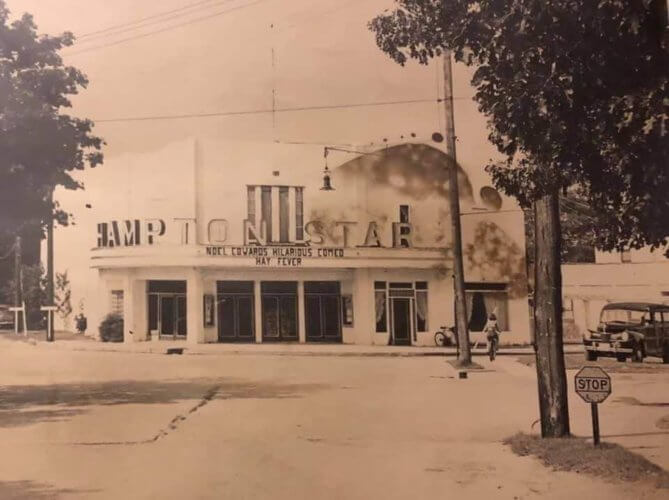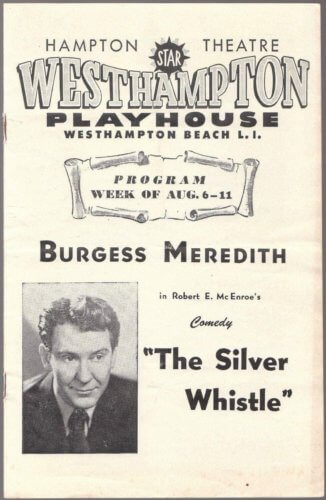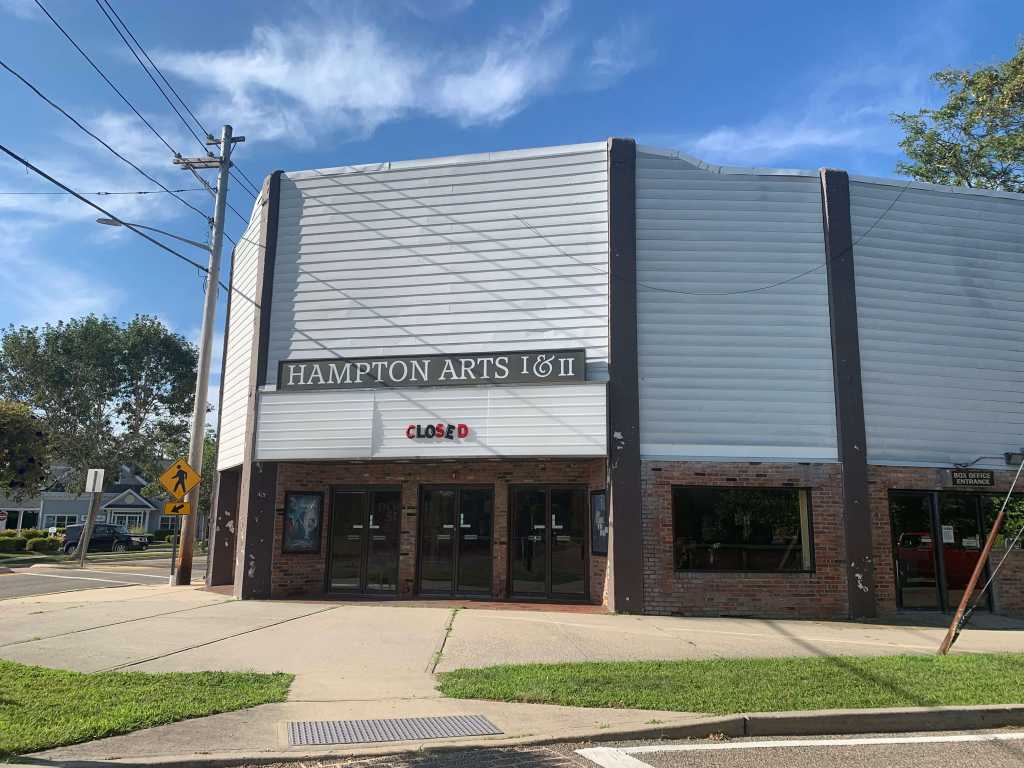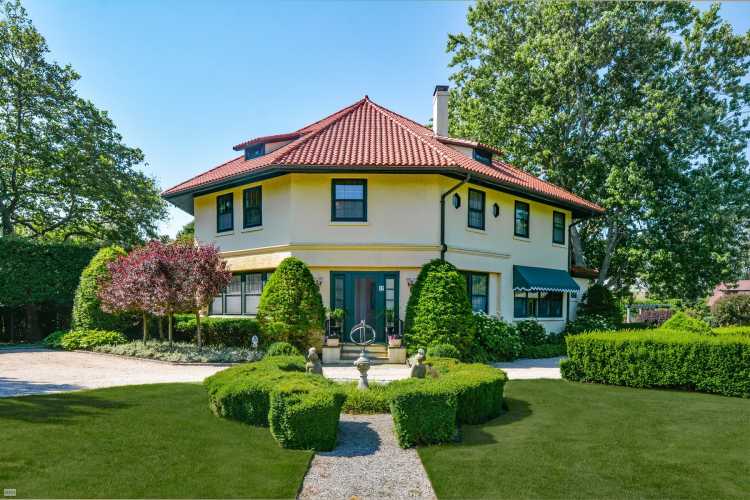The Westhampton Beach movie theater, Hampton Arts Cinema, is officially on the market, though it has been shuttered since 2020.
Located at 2 Brook Road, at the head of Brook Road on the traffic circle diagonally across from the Westhampton Police Department and Village Hall, the two-screen cinema is at the gateway to the village’s business district. The asking price is $1.1 million and it’s listed with Cushman & Wakefield.
The free-standing 8,580-square-foot structure sits on a 10,018-square-foot, 0.23-acre parcel. The listing calls it a “prime retail opportunity” and the property is zoned Business District 1 under the Westhampton Beach code.
The Hampton Arts Cinema was cleaned out in mid-2020, at the height of the COVID-19 pandemic, and the marquee has simply read “closed” ever since. With the last known owner, Harvey L. Kaylie, an innovator in the radio-frequency/microwave industry who had a home in the area, having died in 2018, information was sparse about plans for the building.
Records show it is owned by Westhampton Beach LLC tied to Kaylie with a mailing address in Great Neck, according to the tax rolls. Kaylie acquired the property in 2003 for $575,000, according to records. He once told The New York Times he had plans to use it in concert with the Hampton Synagogue, which has been expanding its footprint just up the block.
One of the last independent movie theaters to operate on Long Island, it is was also only a handful of movie theaters on the East End. The small Montauk cinema closed its doors in 2014, the Regal UA Theater in Southampton permanently closed early last year and there are longstanding plans to close the United Artists movie theater in Hampton Bays to make way for a CVS. The only theaters remaining on the East End are in East Hampton and Mattituck.

Not Just a Westhampton Beach Movie Theater
The Westhampton Beach movie theater dates back to the 1920s. Harry E. Nugent built the Hampton Star Theatre, at Six Corners, as the area was known, in 1927 and the original building contained not only the theater but the first Westhampton Beach Village office, as well as a candy and ice cream business, according to the Westhampton Beach Historical Society.
A fire gutted the structure on February 13, 1933, according to research from Briana Halsey Rogers, a genealogist and local historian. The roof and rear wall of the theatre collapsed, and flames spread to a candy store and an oil burner showroom in the same building, The Daily News reported at the time. Nugent, his wife and their two children were asleep in a second-floor apartment when the fire broke out. They barely had time to make it outside, after passersby awakened them, before the walls collapsed.
Nugent eventually rebuilt the theater and is said to have reopened in 1947.
The building became home to theatrical groups and performances. In 1951, Ron Rawson, a radio and television announcer, opened the Westhampton Playhouse. According to a newspaper clipping, it was billed as the largest summer theater as it sat over 700 people, “putting it in the same class with Westport’s (Conn.) famous Country Playhouse.”

It was a place to see and be seen. Famous actors, actresses and singers took to its stage. Paula Laurence, a Broadway musical comedy star who worked with Orson Wells and Cole Porter during her career, performed in “A Connecticut Yankee.” Kay Francis starred in Funny Reflections at the theater, following her 1930s film career when she was the highest-paid actress at Warner Bros. studio. Rise Stevens, a Metropolitan Opera star and East Quogue summer resident, “launched the 1952 Subscription Drive” at the Playhouse.
In 1952, a “show bus” was added “to transport patrons from Patchogue and waystops to the Westhampton Playhouse,” Newsday reported.
Theater executives even recruited actors for smaller parts from far and wide. In 1957, The Amarillo Globe-Times, wrote, “If you are an actor, or have desires to become one, now is your chance to do some summer stock — on Long Island in New York.” Fred Salmans, then the executive producer for the Hampton Star Theatre, was in Amarillo “hunting for potential apprentices” for a 14-week production schedule that included Blithe Spirit, Bus Stop, Personal Appearance, Tender Trap, The Glass Menagerie and The Rainmaker. The theater provided housing, but the actors had to pay $30 per week.
Various other community events were traditionally held at the theater, as well. Clippings from The Times Union show that the Methodist church gave an annual concert there in 1929 and, in 1932, the theater awarded prizes for the best-constructed airplane models. In more recent years, Jewish film festivals have been held there, both for adults and children.
Email tvecsey@danspapers.com with further comments, questions or tips. Follow Behind The Hedges on Twitter, Instagram and Facebook.























